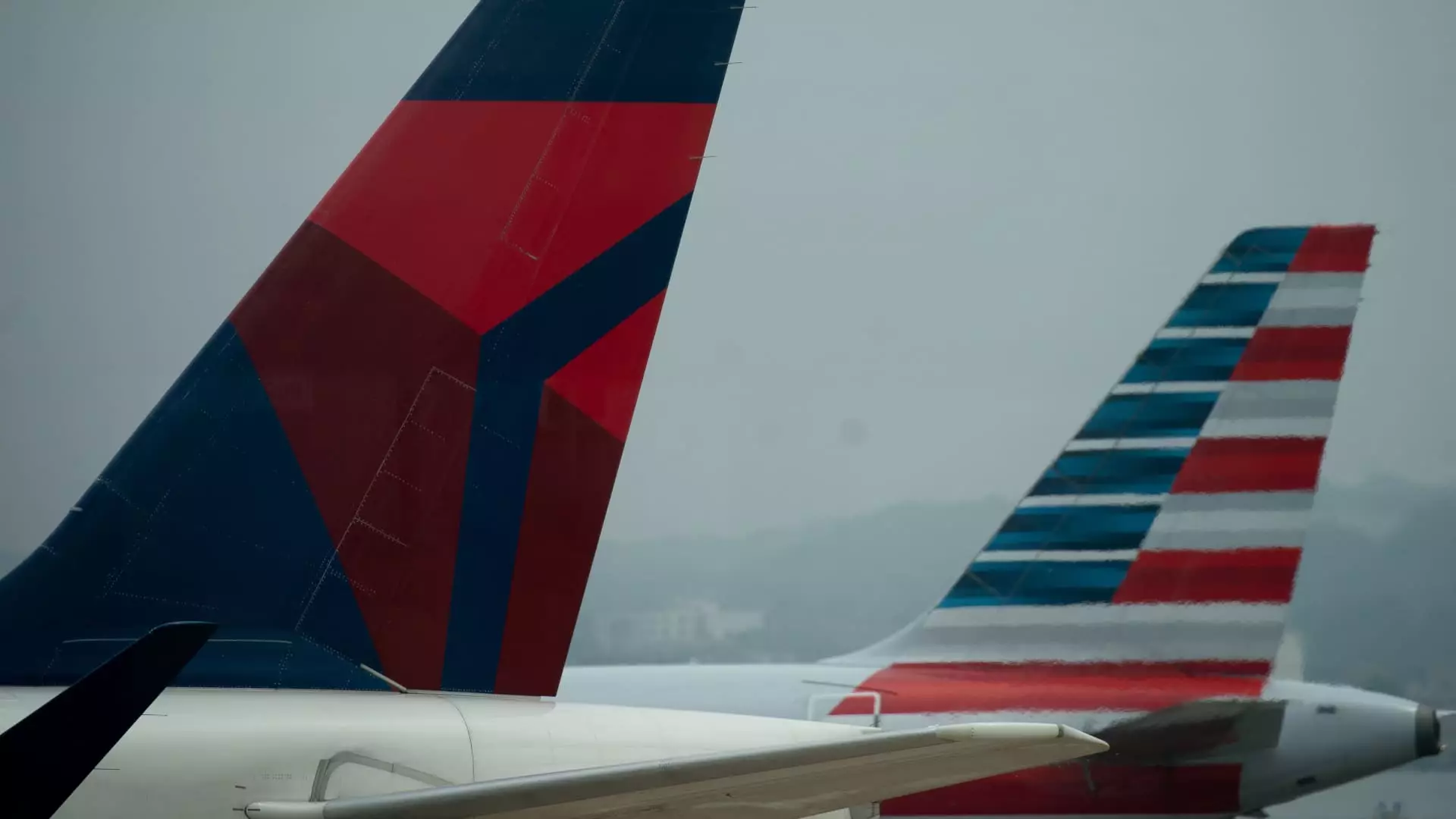The airline industry, once a robust symbol of economic vitality and connectivity, is now grappling with a startling reality: McProfits are evaporating as travel demand dwindles amidst an unpredictable economic climate. Major carriers like American Airlines are bracing for a rocky first quarter, suggesting a loss potentially exceeding 80 cents a share. This far exceeds earlier forecasts, which had projected minimal losses of merely up to 40 cents. When a major airline such as American recalibrates its revenue expectations — previously anticipating growth of up to 5% — it signals significant underlying challenges within the aerospace sector.
American’s grim assessment is attributed to several factors, including a tragic incident involving one of its regional jets and an Army helicopter, as well as a notable drop in domestic leisure travel. This incident not only impacted customer confidence but has also laid bare vulnerabilities the airline had previously overlooked. The market’s response to such news reflects a growing skepticism among investors, foreboding potential turbulence ahead.
Delta and Government Travel Concerns
American Airlines is not alone in this bleak outlook; Delta Air Lines has similarly slashed its first-quarter projections, citing a broad “softness in Domestic demand.” This downturn can be partly linked to waning consumer and corporate confidence, fueled by overarching macroeconomic uncertainties that have led to a retrenchment in spending habits. As businesses become wary of potential economic fallout from changing policies, travel appears to be one of the first discretionary expenses they scale back.
Moreover, the shift in government travel policies since the onset of the Trump administration has created a ripple effect affecting airlines, with a notable decline in government-related travel compounding the existing issues in the market. Airlines have reported dwindling contracts for essential business trips as officials tighten their budgets. Ed Bastian, CEO of Delta, encapsulated this sentiment, noting a pervasive hesitance permeating consumer and corporate travel decisions. The repercussions are clear: fewer journeys translate to diminished revenues, raising serious questions about airline sustainability in the near term.
United Airlines’ Tactical Retreat
As United Airlines feels the effects of diminished demand, CEO Scott Kirby has expressed similar concerns. Painfully aware of the 2% reliance on government travel, he also identified another concerning trend: the impact on consultants and contractors, who contribute an additional 3% to their overall business. This reduction has caused ripple effects across domestic leisure markets, highlighting an interconnected web of economic dependencies that airlines can no longer ignore.
In an attempt to mitigate financial strain, United is hastily retiring 21 aircraft — a strategic maneuver to sidestep an impending $100 million overhaul of engines. This proactive approach reflects a broader industry realization: cash conservation has become critical as they navigate through uncertain waters. Investors are responding, as evidenced by the dramatic plunge in airline share prices following the announcement of losses and down revisions.
A Paradigm Shift in Airline Policies
The economic situation has foisted a review of broader airline operational strategies, reflected poignantly in Southwest Airlines’ decision to amend its long-standing “two bags fly free” policy. The introduction of fees for checked luggage, starting in May, is a noteworthy pivot, signaling a watershed moment in airline consumer relations. Interestingly, despite the unpopular decision that typically alienates some customers, Southwest’s shares surprisingly surged by over 8%. This paradox suggests that stakeholders may prioritize financial pragmatism over consumer satisfaction in these testing times.
JetBlue Airways, too, has found silver linings amid broader industry woes, witnessing a 4% uptick in stock as they navigate their own challenges. By leveraging smart marketing and effective management strategies, they seem poised to carve out a niche where others struggle.
Future Outlook: A Mixed Bag
While the immediate future of the airline industry is fraught with uncertainties and tumultuous shifts driven by external economic factors, some leaders have opted to focus on long-haul international travel and premium segments as potential growth areas. The discerning consumer, despite economic pressures, continues to seek out experiences that transcend the ordinary. The ability to pivot towards more lucrative segments may prove vital for airlines in weathering this storm.
Ultimately, the current turbulence faced by the airline industry serves as a microcosm of the larger economic landscape, exposing vulnerabilities that may have been dormant during boom periods. As airlines navigate through shrinking demand amid macroeconomic challenges, their next moves will be scrutinized. Adaptation and agility will be paramount, and companies that recognize this will likely emerge stronger in a transformed market.


Leave a Reply